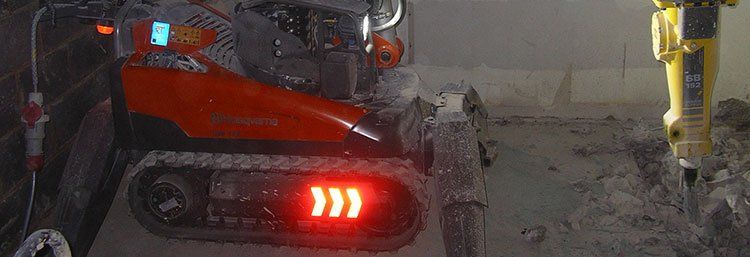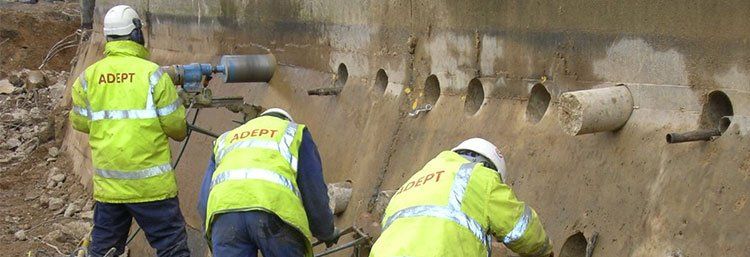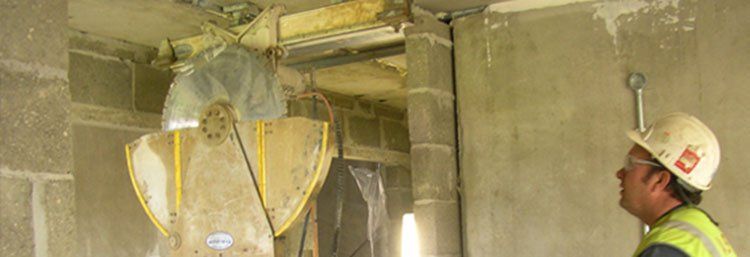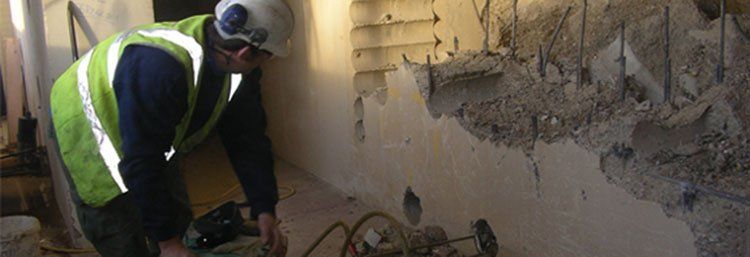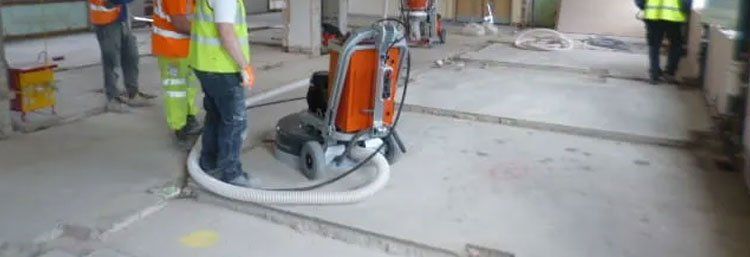Drilling Services
At Adept Concrete Cutting Ltd, we provide professional drilling, sawing and controlled demolition services throughout the UK.
Contact
Controlled Demolition
Our Husqvarna DXR Robotic Demolition machines are an ideal solution to removing concrete where there are restrictions related to access, weight loading or toxic atmospheres. Click below for more details.
Diamond drilling services
Adept Concrete Cutting Ltd offer a range of diamond drilling services to the construction and civil engineering sector. We are a long established and highly skilled drilling company and offer a range of drilling services such as core drilling, rotary percussion drilling and stitch drilling. Click below for more details.
Concrete cutting
As one of the UK's premier concrete cutting companies, we use a variety of methods for producing fast, clean, dust free and accurate cuts in reinforced concrete and other building materials. These includes concrete sawing in walls and soffits, wire sawing and ring sawing. Click below for more details.
Controlled demolition
Controlled demolition is a method of removing structures that are first isolated by drilling and/or saw cutting, before being removed using techniques such as hydraulic bursting, crunching or pneumatic breaking. Click below for more details.
Grinding
We use some of the market's most powerful and efficient machines for polishing and grinding floors. Our grinding services are the ideal choice for concrete floor preparation and repair work as well as polishing and grinding concrete and Terrazo using remote controlled machinery. Contact us to find out more about us. If you are looking for a diamond drilling or sawing job, you can contact us.

